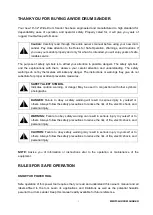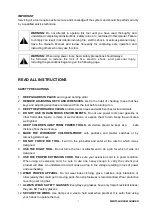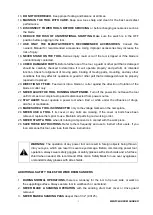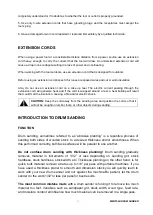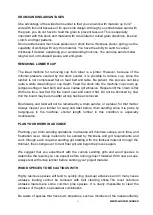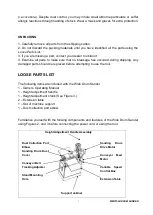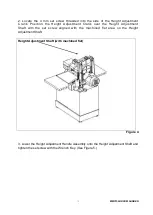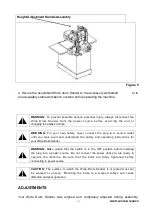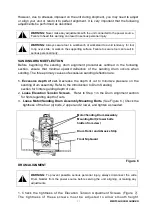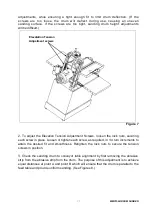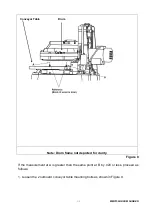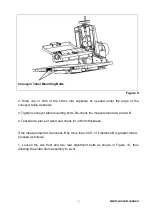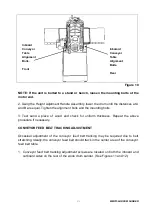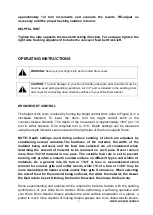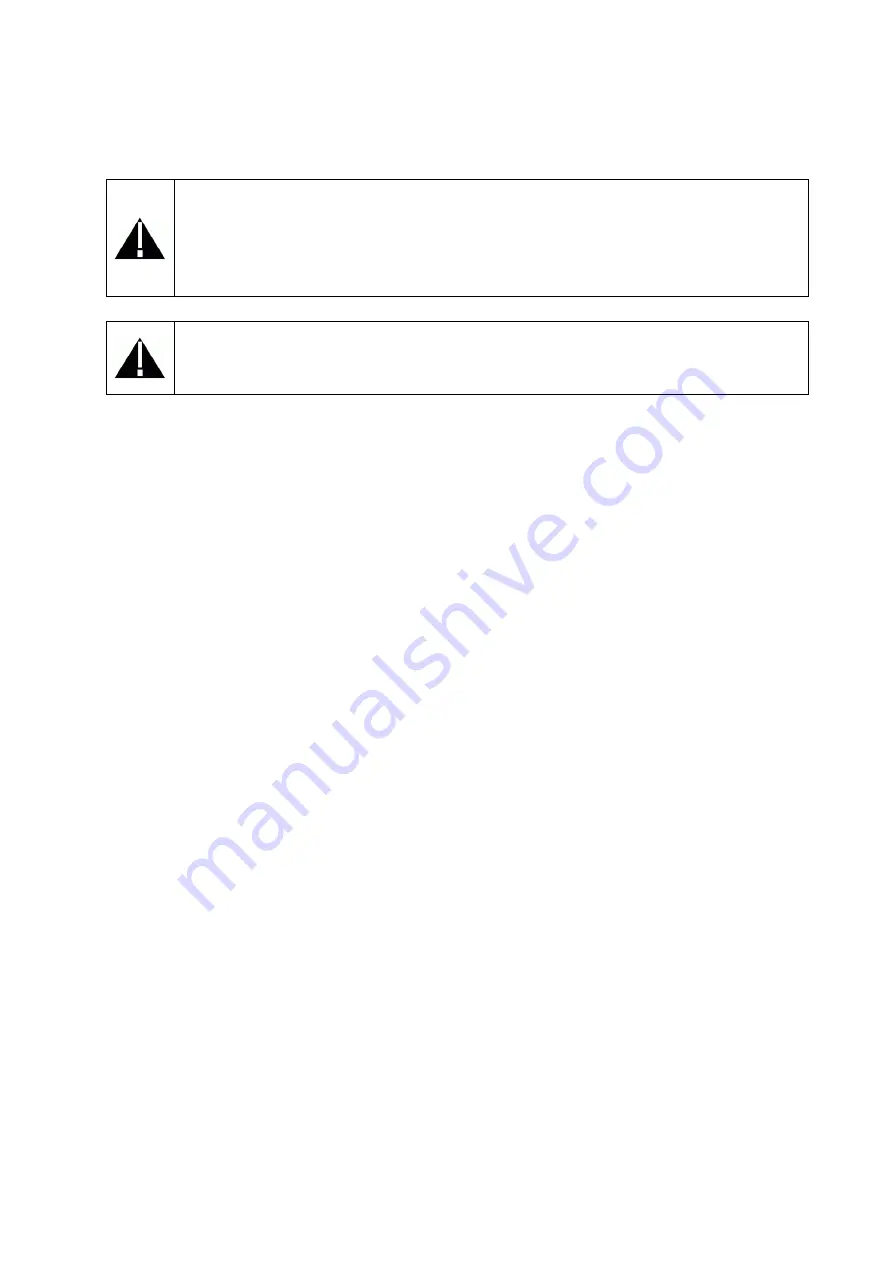
MM3156A DRUM SANDER
2
IMPORTANT
Servicing of a tool requires extreme care and knowledge of the system and should be performed only
by a qualified service technician.
WARNING:
Do not attempt to operate this tool until you have read thoroughly and
understand completely all instructions, safety rules, etc, contained in this manual. Failure
to comply can result in accidents involving fire, electric shock, or serious personal injury.
Save the Owner’s Manual and review frequently for continuing safe operation and
instructing others who may use this tool.
WARNING:
When using power tools, basic safety precautions should always
be followed to reduce the risk of fire, electric shock, and personal injury,
including the precautions beginning on the following page.
READ ALL INSTRUCTIONS
SAFETY PRECAUTIONS
1.
KEEP GUARDS IN PLACE
and in good working order.
2.
REMOVE ADJUSTING KEYS AND WRENCHES.
Get in the habit of checking to see that hex
keys and adjusting wrenches are removed from the tool before turning it on.
3.
KEEP THE WORK AREA CLEAN.
Cluttered work areas and work benches invite accidents.
4.
DO NOT USE IN DANGEROUS ENVIRONMENTS.
Do not use power tools near gasoline or
other flammable liquids, in damp or wet locations, or expose them to rain. Keep the work area
well lighted.
5.
KEEP CHILDREN AWAY FROM POWER TOOLS.
All visitors should be kept at a safe
distance from the work area.
6.
MAKE THE WORKSHOP CHILDREN-PROOF
with padlocks and master switches or by
removing starter keys.
7.
DO NOT FORCE THE TOOL.
It will do the job better and safer at the rate for which it was
designed.
8.
USE THE RIGHT TOOL.
Do not force the tool or attachment to do a job for which it was not
designed.
9.
USE THE PROPER EXTENSION CORD.
Make sure your extension cord is in good condition.
When using an extension cord, be sure to use one heavy enough to carry the current your
product will draw. An undersized cord will cause a drop in line voltage resulting in loss of power
and overheating.
10.
WEAR PROPER APPAREL.
Do not wear loose clotning, glove, neckties, rings bracelets, or
other jewelry that could get in moving parts. Non-slip footwear is recommended. Wear protective
covering over long hair.
11.
ALWAYS WEAR SAFETY GLASSES.
Everyday eye glasses have only impact-resistant lenses;
they are NOT safety glasses.
12.
SECURE THE WORK.
Use clamps or a vise to hold work when practical. It is safer than using
your hands to operate the tool.


